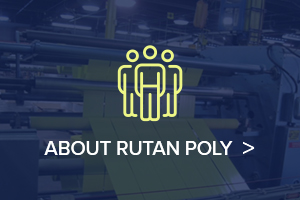So, you are aware of the numerous benefits plastic bags bring, but every time when you wrap up your grocery shopping and get in line for checkout, you find it somewhat difficult to choose between paper and plastic bags.
The thought of convenience pulls you towards plastic, but you may automatically go for the option that is ‘proclaimed’ environment-friendly: paper.
Keeping this in mind, which option is really better: paper or plastic? Well, this question has created a huge debate. It may seem like an easy choice, but don’t just let the green guilt push you to opt for paper.
Most people think of paper bags to be more environmentally friendly simply because of the fact that they are made from wood, which is a renewable and organic resource.
However, if we take a look at the various factors that go into the manufacturing of both paper and plastic bags, you will find that producing paper bags is a lot less environmentally-friendly as opposed to producing plastic bags.
In this chapter, we will compare the various factors that go into the production of both plastic and paper bags:
Energy Consumption
The production of one hundred million plastic bags requires energy that is equivalent to almost 8,300 barrels of crude oil. At first, this may sound like a lot for the production of something as nominal as plastic bags, but only until you consider the amount of energy it takes to produce plastic bags of the same number.
It takes five times that much total energy! While it does require the cutting down of valuable trees, producing one hundred million paper bags also requires energy inputs that are equivalent to 15,100 barrels of crude oil, plus additional inputs from nuclear energy, wood waste and hydroelectric power.
Water Consumption
Both manufacturing processes use water. It takes at least 220 liters of water to produce one thousand plastic bags. However, when it comes to paper bags, it takes 3800 liters to produce the same number of paper bags. That’s almost 17 times the volume used for plastic bags!
If we dive further into this, these paper bags would also weigh 10 times more, and take up seven times the space in transit to stores and supermarkets, ultimately resulting in significantly higher greenhouse gas emissions than a plastic bag.
Recycling
When it comes to recycling, the process involved in paper bags is more difficult as compared to plastic bags. In paper bag recycling, the bags are first re-pulped using several chemicals. The pulp fibers are then separated, and cleaned and screened to ensure they are free of contaminants. Finally, the fibers are washed, pressed, and then rolled into paper once again.
On the other hand, plastic bags are simply re-melted and re-formed. However, that’s not the only difference here. It takes 91% less energy to recycle a kilo of plastic bags as opposed to a kilo of paper. Nevertheless, due to lack of awareness and recycling facilities, the rates of plastic bag recycling are significantly lower than paper bag recycling.
Pollution
Obviously, the production of both paper and plastic bags results in air pollution. However, paper bags pollute 70% more than plastic bags, which is significantly higher.
According to a study, paper manufacturing causes 80% more greenhouse gas emissions than plastic bags. On the other hand, paper bag making also attributes 50 times more towards water pollution as opposed to plastic bags.
Paper bags also generate 80% more solid waste than plastic bags. So, considering all these factors, it is evidently clear that plastic bags are the greener option of the two.





